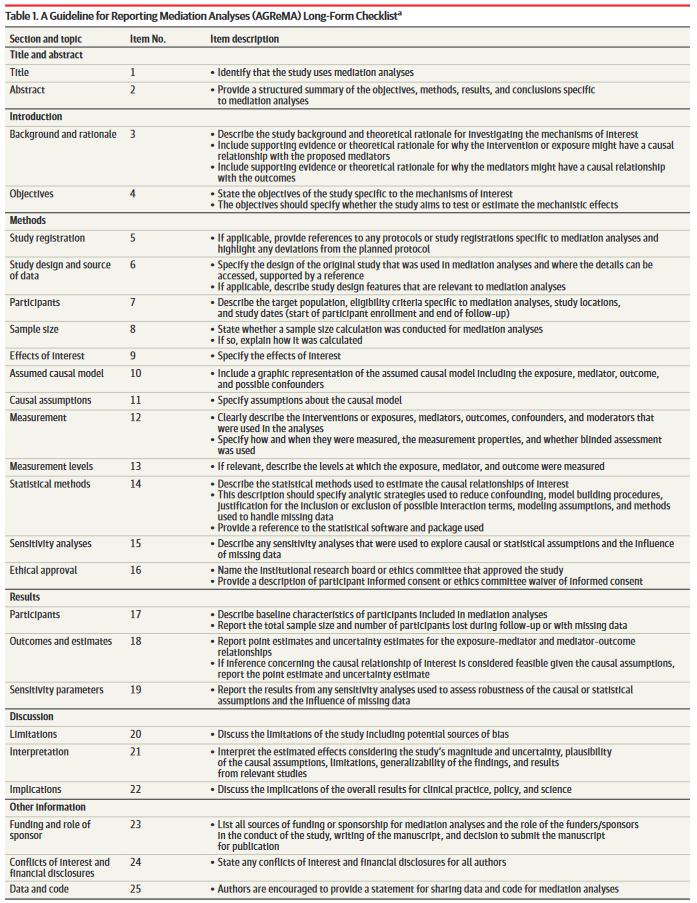9 Reporting guidelines
In this session we will use some time to understand the reporting guidelines for mediation analysis as these are seldom used in practice.
- Present results from mediation analysis according to the current mediation analysis reporting guidelines
9.1 AGReMA checklist
Recent reviews on mediation analyses have suggested that the reporting and documentation from studies were insufficient in the interpretation of the results and for application in meta-analysis.
Based on this, a group of researchers have using a comprehensive consensus method developed a reporting checklist (1).
There is both a long and a short form of this reporting checklist. The long form should be used if the main aim of the paper is mediation analysis. In many papers, mediation analysis is conducted as an extra step. Therefore, the authors also developed a short form that should be used in this situation.
9.1.1 Long format
The list contains 25 items and in many ways resemble other reporting checklists Figure 9.1.
What is worth highlighting is that the reasoning and rationale for even conducting mediation analysis should be reported. Why do you believe there is an association between A and Y and why do you think M is a mediator.
They also emphasize that you should include a DAG that show your assumptions. And you should critically consider whether you can fulfill the causal assumptions before performing mediation analysis.
9.1.2 Short format
The short list includes fewer items, but still emphasize key things to report. See Figure 9.2.
::: callout-note ## Exercise - 15 min
- How many of the items are reported in the mediation analysis papers you reviewed in the beginning of the course?
- What do you think are the most important things missing?
:::

